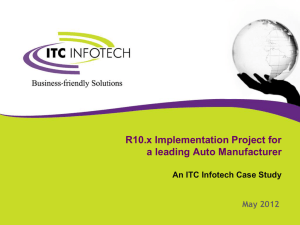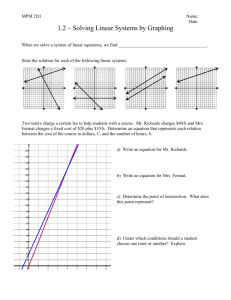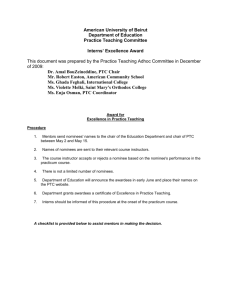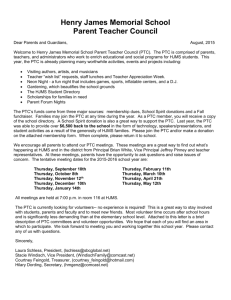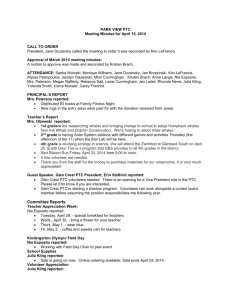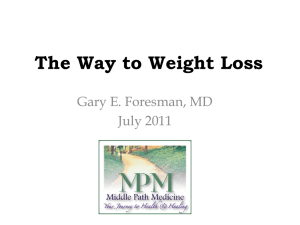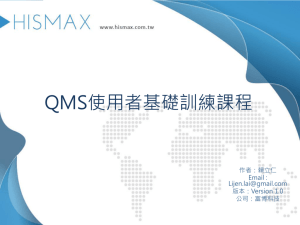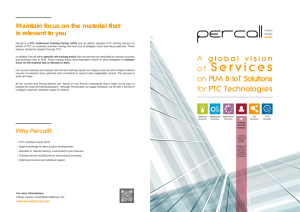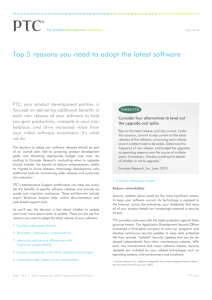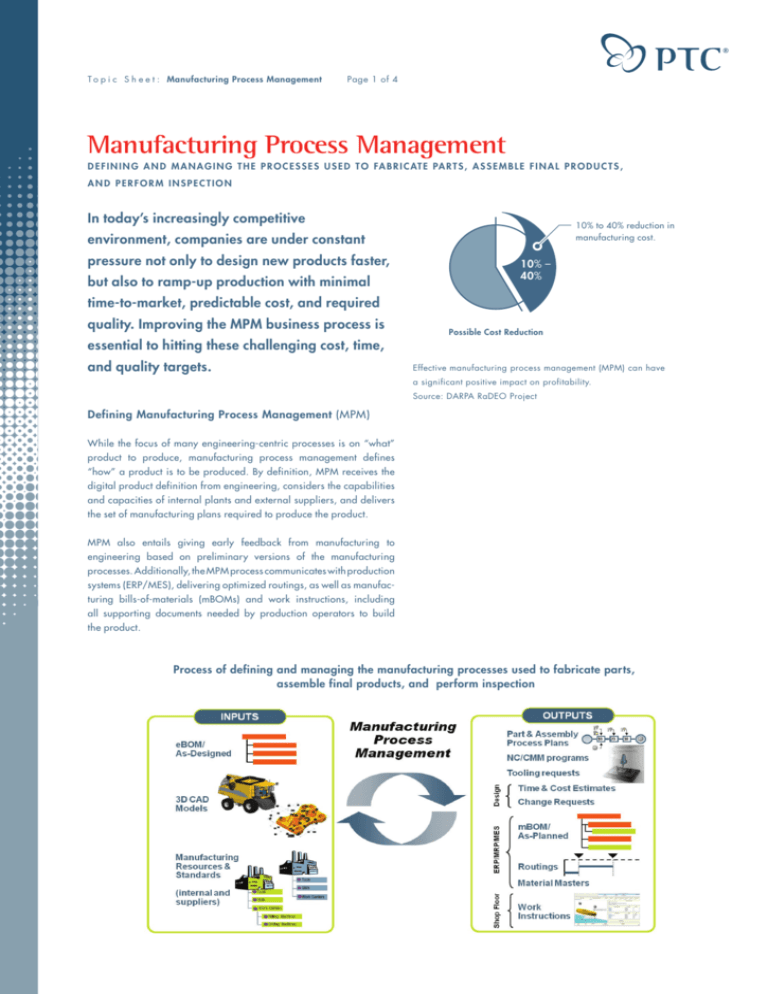
T o p i c S h e e t : Manufacturing Process Management
Page 1 of 4
Manufacturing Process Management
D e f i n i n g a n d m a n a g i n g t h e p r o c e s s e s u s e d t o fa b r i c at e pa r t s , a s s e m b l e f i n a l p r o d u c t s ,
and perform inspection
In today’s increasingly competitive
10% to 40% reduction in
manufacturing cost.
environment, companies are under constant
pressure not only to design new products faster,
but also to ramp-up production with minimal
10% –
40%
time-to-market, predictable cost, and required
quality. Improving the MPM business process is
essential to hitting these challenging cost, time,
and quality targets.
Possible Cost Reduction
Effective manufacturing process management (MPM) can have
a significant positive impact on profitability.
Source: DARPA RaDEO Project
Defining Manufacturing Process Management (MPM)
While the focus of many engineering-centric processes is on “what”
product to produce, manufacturing process management defines
“how” a product is to be produced. By definition, MPM receives the
digital product definition from engineering, considers the capabilities
and capacities of internal plants and external suppliers, and delivers
33 %
An efficient change process
can cut upwards of 33% off
of the typical product
development cycle time.
the set of manufacturing plans required to produce the product.
MPM also entails giving early feedback from manufacturing to
engineering based on preliminary versions of the manufacturing
processes. Additionally, the MPM process communicates with production
T O TA L Product Development Cycle Time
systems (ERP/MES), delivering optimized routings, as well as manufacturing bills-of-materials (mBOMs) and work instructions, including
all supporting documents needed by production operators to build
10% to 40% reduction in
manufacturing cost.
the product.
33%
Process of defining and managing the manufacturing processes used to fabricate parts,
assemble final products, and perform inspection
Possible Cost Reduction
T o p i c S h e e t : Manufacturing Process Management
Page 2 of 4
Understanding the Need to Optimize Manufacturing
Process Management
Benefits of Optimizing Manufacturing Process Management
Typical benefits from improving the MPM process include:
Optimizing the MPM process is becoming increasingly important to
companies. Unfortunately, the process itself is also becoming more
difficult to streamline. Products, while becoming more complex, must
remain configurable to meet market needs. At the same time, production
Improved Efficiency of Manufacturing Engineers
• Enables direct reuse and manipulation of engineering information in process plans, to avoid data duplication
volume, cost, and time-to-market targets are shrinking. Manufacturing
organizations must adapt their manufacturing environment to ramp-up
• Enables reuse of standardized and normalized processes
new designs with higher productivity, flexibility and quality.
There are four key areas where companies can typically improve their
• Reduces time required to create and update work instructions
MPM process:
1. Define the Manufacturing Process During the Product Design
Phase. Generally, designers “throw the design over the wall” to
manufacturing engineers. However, if manufacturing engineers were
given direct access to the ever-evolving design information, they could
define the manufacturing process in parallel with product design.
Furthermore, with this information, manufacturing will become better
equipped to handle concurrent product development and better able to
adapt to in-process engineering changes.
Improved Production Ramp-up and Productivity
• Reduces training time and learning curve with accurate
and meaningful 3D work instructions
2. Provide Manufacturing Engineers with Access to Engineering
Data. Accurate manufacturing process definition requires that
manufacturing engineers be able to directly reuse engineering data,
including parts, classification, 3D mockups, and manufacturing
requirements, such as GD&T information. Yet, typically, manufacturing
engineers lack direct access to this information.
3. Eliminate Manual Processes. Today, most process plans are
defined using a spreadsheet program, and work instructions are
created using a word processor. This use of manual tools leads to a
variety of issues: slow execution of the process, data duplication and
inaccuracy, and chaos whenever a change occurs to the engineering
definition of the product.
and resources
though their dynamic generation
• Reduces production trial-and-error method of optimizing manufacturing processes with digital validation
Reduced Cost of Changes
• Identifies required design changes earlier in the design, with timely feedback from manufacturing
• Streamlines change impact identification and propagation
• Increases engineering visibility to the potential manufacturing impact of a change, to facilitate cost-effective design decisions
• Provides an integral change management system, which supports both engineering and manufacturing needs
Reduced Scrap and Rework
• Reduces the risk of producing incorrect product configurations
by eliminating discrepancies between the latest process definition
and the work instructions used on the shop floor
4. Improve Enterprise Collaboration. Since manufacturing environments typically span multiple plants and time zones, and with manufacturers seeking to implement “design anywhere, build anywhere” strategies, it’s difficult for manufacturing engineers to capture and share
their knowledge, and ensure consistency across the enterprise.
Unless manufacturing processes can be
planned, designed, modeled, and ramped-up,
there is no scalable business potential.
– AMR Research
T o p i c S h e e t : Manufacturing Process Management
Page 3 of 4
The Solution: PTC’s Windchill MPMLink
Product Design
Parts & eBOM
3D Models
Requirements
Production Schedule
The MPM process is generally characterized by the following steps:
System Design
Detailed Design
Change Management
Management Processes
1. Define Manufacturing Strategy. In this step, manufacturing engineers evaluate both the design requirements and the manufacturing
1
capabilities and capacities necessary to support the manufacturing
Define Manufacturing
Strategy
strategy. They identify which partners will be required, and any long
lead items that will need immediate attention.
2. Advanced Manufacturing Planning. (“Advanced”, in this context,
means “early”) In this step, manufacturing engineers work concurrently with engineering, as early as possible in the design process,
using preliminary design information. Together, they create preliminary versions of the manufacturing bill-of-material (mBOM) and
process plans, initiate new tooling requests, and produce time and cost
estimates. Factual feedback or requests-for-change are also provided
to engineering in the early stages of product design to improve
manufacturability.
Manufacturing
Outsourcing
Insource/
Outsource?
2
Define Manufacturing
BOM
4
Publish Work Instructions
Define Process Plans
Manage Resources
Create NC/CMM
Programs
5
Approve?
Estimate Time & Cost
3. Optimize Process Plan. In this step, manufacturing engineers create
several manufacturing process alternatives to compare and optimize
the manufacturing process. Manufacturing process alternatives can
represent either different alternatives in one plant, alternatives between
different plants, or make-versus-buy options. Optimization methods
typically include line balancing, but can also involve more specialized
types of simulation, such as work-center simulation or whole-factory
discrete event simulation.
Release to Production
3
Optimize Process
Plan
Process Plans
mBOMs
Work Instructions
Need
Change?
4. Document Process Plan. Once the process plan and product design
are mature, the manufacturing engineer must detail and document the
manufacturing processes that have been selected from the previous
optimization step. PTC’s Pro/ENGINEER® or other 3D CAD/CAM tools
are used to define NC (numerical control) tool paths or CMM (coordinate measuring machine) inspection programs. Work instructions are
produced for the operator, and typically include images of the product,
which are dynamically generated from the process definition with
Windchill MPMLink. These images can be associatively defined using
Pro/ENGINEER or PTC’s ProductView® visualization solution, so that
they may easily be kept up-to-date.
5. Pre-production and Production. In this step, the manufacturing
process definition is electronically released to production systems (ERP/
MES). Work instructions are made available to the shop floor in either
printed or electronic format. Electronic work instructions can also be
used to collect feedback from the actual execution of the process, such
as deviations, waivers and as-built BOMs.
Manufacturing Process Management process flow
T o p i c S h e e t : Manufacturing Process Management
Page 4 of 4
Critical Capabilities
With Windchill MPMLink, PTC’s Product Development System sup®
ports the MPM process with an integral solution that includes the following capabilities:
• Integral Product, Process, and Resource object model:
The industry’s only integral PLM (Product Lifecycle Management)
solution where both product definition and process definition data are managed in a single system, without any data duplication
• Integral change and configuration management covering both engineering and manufacturing impact
• Associative eBOM-mBOM transformation with the ability to transform engineering bill-of-materials (eBOM) into multiple manufacturing bill-of-materials (mBOM), while keeping
associativity with traceability links
• Create and manage alternate BOMs describing the different manufacturing variations that can produce the same part
Windchill MPMLink enables users to produce accurate process plans and
dynamically created work instructions.
• Quickly identify and analyze discrepancies between the eBOM and mBOM, with visual indicators and BOM comparison reports
• Embedded 3D environment (provided by included ProductView capabilities) enabling users to:
- Visualize engineering designs
An automated and optimized MPM process not only requires the
implementation of superior technology, but it also requires compa-
PTC – Uniquely Qualified
- Select parts from 3D to create mBOM and to allocate part
nies to streamline their day-to-day processes. Just as important, com-
to process plan operations
panies need to ensure that everyone across the organization under-
stands and adopts the new processes and technology.
- Dynamically generate 3D representations of the mBOM,
process plan and operations
After 20 years of deploying process and technology improvements
across thousands of customer sites, PTC Global Services under-
- Include 3D annotations and markups
stands all the components required for companies to achieve their
product development goals. We offer solutions that include the right
• Process plans that allow the definition of plant-specific processes with blend of process consulting, system implementation, and education
services, so customers realize the most value from their PDS investment.
alternate and parallel sequences of operations and sub-operations
We implement industry best practices that fully leverage PTC technol• Completely define process plan operations with parts, resources, ogy, so companies can take full advantage of the technology’s poten-
tial while avoiding costly customizations. Plus, each of our solutions
standard procedures, documents, and time breakdown
incorporates a unique training approach that accelerates the adop• Review and analyze process plan definitions in an easy-to-use, tion of new technology and processes.
interactive Gantt chart, including resource usage and loading
• Manage a common library of manufacturing resources, such
as Plant, Work Center, Tooling, Process Materials, Skills, and
standardized processes
• Dynamically generated rich work instructions
• Electronically share manufacturing deliverables with ERP or MES systems using secure Windchill integration technology
© 2009, Parametric Technology Corporation (PTC). All rights reserved. Information
described herein is furnished for informational use only, is subject to change without notice,
and should not be construed as a guarantee, commitment, condition or offer by PTC. PTC,
the PTC Logo, Windchill, MPMLink, ProductView, Pro/ENGINEER, and all PTC product
names and logos are trademarks or registered trademarks of PTC and/or its subsidiaries in
the United States and in other countries. All other product or company names are property
of their respective owners.
4585-MPM-TS-0 5 0 9

